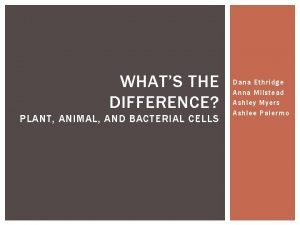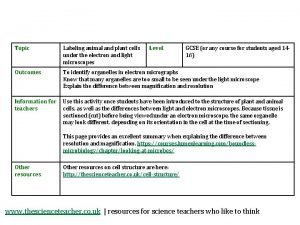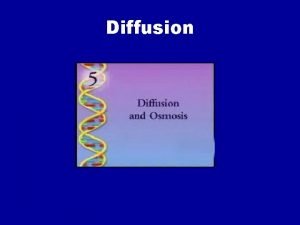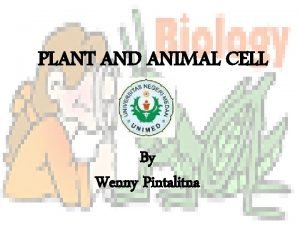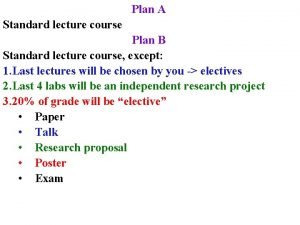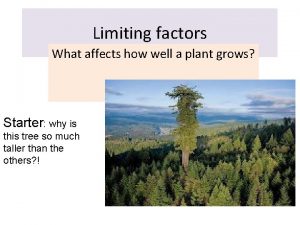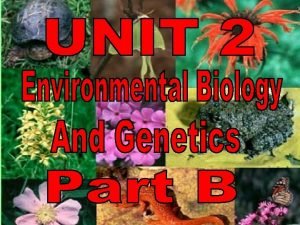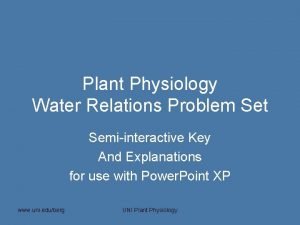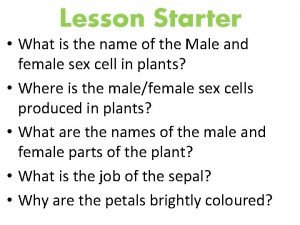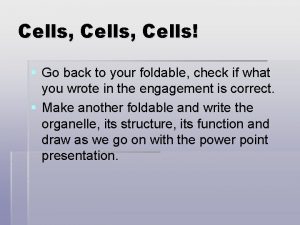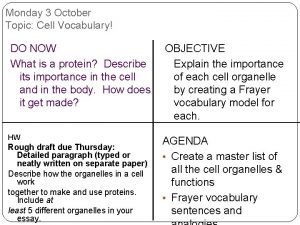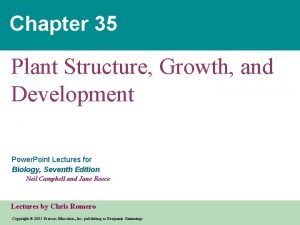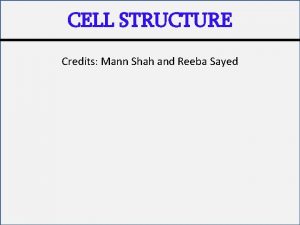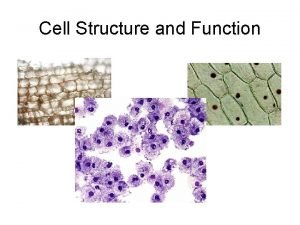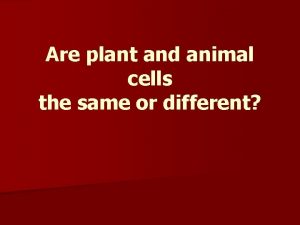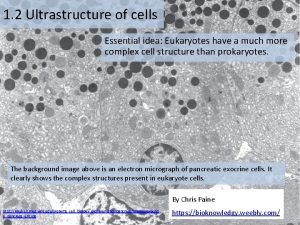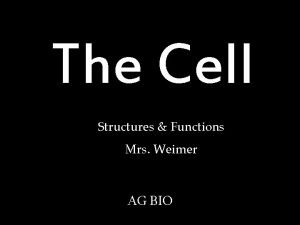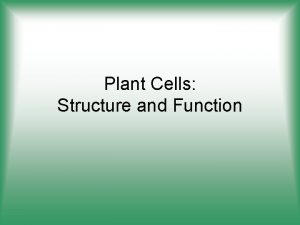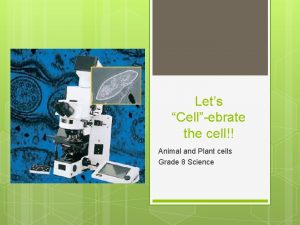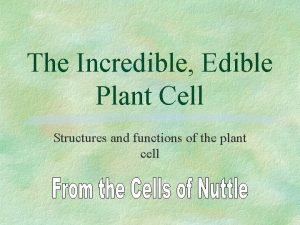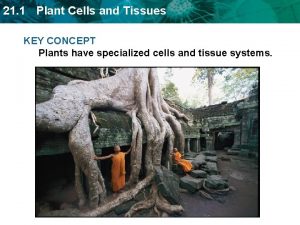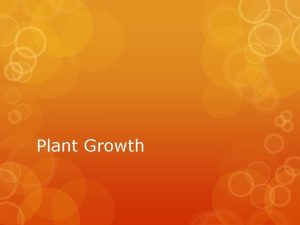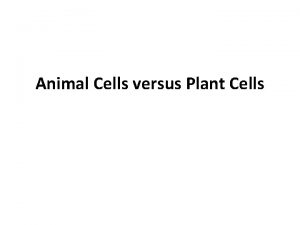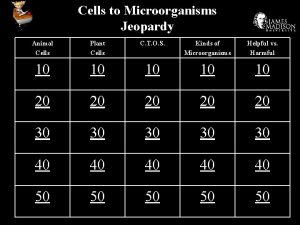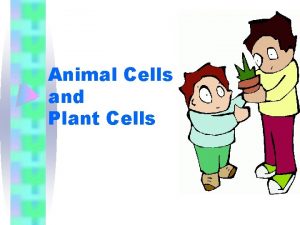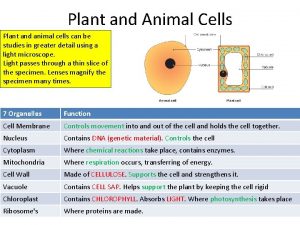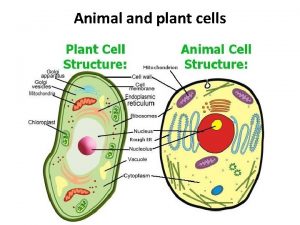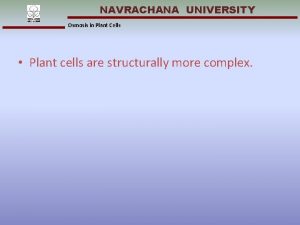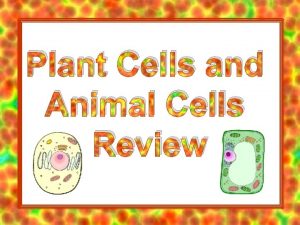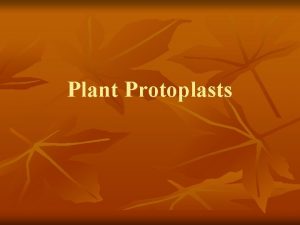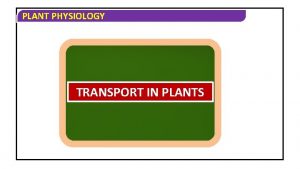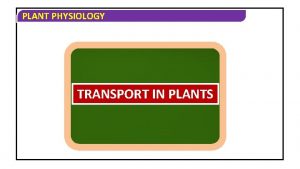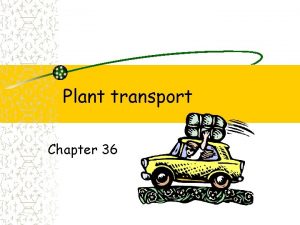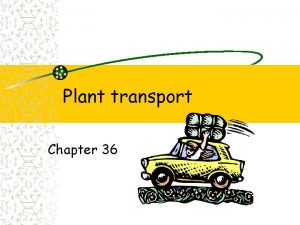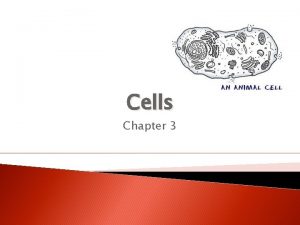TRANSPORT IN PLANT CELLS Plant transport systems are

















































- Slides: 49

TRANSPORT IN PLANT CELLS

• Plant transport systems are less complex than those of animals. • Plants are less active so their cells do not need to be supplied with substances as quickly. • The structures of plants also enable them to get enough oxygen to their cells by diffusion. • Plants have two transport systems called • The Xylem • The Phloem

STRUCTURE OF XYLEM VESSELS • Xylem vessels are: 1. Hollow and dead with no cytoplasm or cellular components in a regular cell 2. The end walls have disappeared and since they meet end to end, they form long tubes throughout the plant. 3. Their walls are made of cellulose and lignin which is very strong.

FUNCTION OF XYLEM VESSELS 1. Transport WATER from the roots of plants, up the stems and to the leaves. 2. Strong lignin present helps to hold the plants upright. 3. Wood is therefore mainly composed of lignin.

STRUCTURE OF PHLOEM TUBES 1. Phloem is made of long hollow cells joined end to end, but their end walls have not completely broken down. 2. The cells are living. 3. Phloem tissue has seive plates, sieve tubes and companion cells with cytoplasm and organelles.

FUNCTION OF PHLOEM TUBES • • Phloem tubes carry food materials made by chloroplasts found mainly in the leaves of plants, to the rest of the cells of the plant that do not readily photosynthesize.

VASCULAR BUNDLES • Xylem vessels and phloem tubes are usually grouped close together in structures called vascular bundles.

VASCULAR BUNDLES • In roots, vascular bundles are found in the centre. • In stems they are arranged in a ring near the outside edge.

VASCULAR BUNDLES • In leaves, they are found throughout and side by side (they collectively form the veins).

RECAP VASCULAR BUNDLES


MOVEMENT OF WATER THROUGH PLANTS

• The movement of water through a plant can be broken down into five stages: 1. Absorption of water by the root hair cells 2. Movement of water across the root cortex to the xylem 3. Movement of water up the xylem 4. Movement of water across the leaf cells 5. Evaporation of water from the leaves


SUMMARY • Water moves from soil root hair cells root cortex xylem up to leaves atmosphere

WATER UP THE XYLEM • Water moves up the xylem by: 1. Capillarity (along with adhesion and cohesion) 2. Root pressure 3. Transpiration pull All leading to mass flow.

CAPILLARITY • Capillarity is how liquids travel up narrow tubes. • The more narrow the tube, the faster the movement of water.

ADHESION AND COHESION • Cohesion is the attraction of water molecules to one another so they can move together. • Adhesion is the sticking of these water molecules to inner surfaces of the xylem vessels as capillarity carries them upwards.

ROOT PRESSURE • Roots have a high concentration of sugars and a lower concentration of water. • Since the soil has a higher water concentration, water constantly moves into roots helping to push water before it up the xylem to the leaves.

WATER ENTERING ROOTS

WATER ENTERING ROOTS

TRANSPIRATION PULL • The leaves are constantly losing water. This water must be replaced and this creates a tension that “pulls” water up from roots and xylem.

WATER IN THE LEAF • Water moves from cell to cells in the leaf, each previous cells having a greater water potential (more water) than the last. • So a concentration gradient is made and water moves from cell to cell by osmosis until reaching the stomata to exit into the atmosphere.

TRANSPIRATION • Transpiration is the evaporation of water from the leaves of the plant through the stomata which are more numerous on the underside of the leaf.



TRANSPIRATION STREAM • This is the movement of water from roots to xylem to leaf.


TRANSPIRATION RATE • This is how quickly water leaves the leaf. • Factors affecting transpiration rate are: 1. Wind 2. Humidity 3. Temperature 4. Light intensity 5. Water availability

FACTORS AFFECTING TRANSPIRATION

TRANSLOCATION

Translocation of Minerals and Organic Substances • Transport of organic substances produced by photosynthesis transported to other parts of the plant. • For growth or storage. • Phloem is responsible.

Evidence of Phloem Translocation of Organic Substances • Cut phloem releases sweet sap. • Sugar content of phloem varies with environmental conditions just like photosynthesis.

Evidence of Phloem Translocation of Organic Substances • Removal of a ring of phloem accumulates sugars above ring.

• Radioactive 14 CO 2 given to plants, 14 C carbohydrates found in the phloem. • Aphids feeding on phloem, show presence of carbohydrates and amino acids in mouth.



STORAGE ORGANS OF PLANTS

• Plants need to convert and store the products of photosynthesis for later use. • Converted to sucrose for transport in phloem. • Food stored as sucrose or starch.

• Storage organs of plants can be: 1. Underground stem 2. Above ground stem 3. Roots 4. Underground leaves 5. Fruits 6. Seeds

UNDERGROUND STEM RHIZOME (ginger) CORM (dasheen)

UNDERGROUND STEM TUBER (Irish potato)

ABOVE-GROUND STEM SUGARCANE CELERY

ROOTS TAP ROOTS (carrot) TAP ROOTS (turnip)

UNDERGROUND LEAVES BULB (onion) BULB (Lilly)

FRUITS

SEEDS ENDOSPERMIC (corn) NON-ENDOSPERMIC (cotyledonous) (red pea)

FLOWER CAULIFLOWER BROCCOLI

LEAVES LETTUCE CABBAGE
 Mikael ferm
Mikael ferm Animal cells and plant cells venn diagram
Animal cells and plant cells venn diagram Olfactory groove keros classification
Olfactory groove keros classification Dr saja
Dr saja Thyroid parafollicular cells
Thyroid parafollicular cells Haploid and diploid venn diagram
Haploid and diploid venn diagram Somatic vs germ cells
Somatic vs germ cells Chlorocruorin
Chlorocruorin Prokaryotic vs eukaryotic
Prokaryotic vs eukaryotic Prokaryotes vs eukaryotes venn diagram
Prokaryotes vs eukaryotes venn diagram Why did robert hooke name cells “cells”?
Why did robert hooke name cells “cells”? Masses of cells form and steal nutrients from healthy cells
Masses of cells form and steal nutrients from healthy cells Pseudostratified vs simple columnar
Pseudostratified vs simple columnar What cell type
What cell type Which organisms are prokaryotes
Which organisms are prokaryotes Chapter 8 cellular reproduction cells from cells
Chapter 8 cellular reproduction cells from cells Cells and life lesson 1 answer key
Cells and life lesson 1 answer key Whats the difference between animal and plant cells
Whats the difference between animal and plant cells Magnification of cell
Magnification of cell Difference of animal cell and plant cell
Difference of animal cell and plant cell Transport mechanism
Transport mechanism Prokaryotes vs eukaryotes venn diagram
Prokaryotes vs eukaryotes venn diagram Plant cell endoplasmic reticulum function
Plant cell endoplasmic reticulum function Perixomes
Perixomes .
. Plant cells
Plant cells How animal cells use nutrients
How animal cells use nutrients Plant and animal cells
Plant and animal cells Plant sex cells
Plant sex cells Water relations in plant cells worksheet answers
Water relations in plant cells worksheet answers Plant sex cells
Plant sex cells Plant and animal cells foldable
Plant and animal cells foldable Plant vs animal cells
Plant vs animal cells Microtubules in plant cells
Microtubules in plant cells Microtubules in plant cells
Microtubules in plant cells Microvilli in plant cells
Microvilli in plant cells Plant cells
Plant cells Whats the difference between plant and animal cells
Whats the difference between plant and animal cells Palisade mesophyll cell function
Palisade mesophyll cell function How to find pressure potential
How to find pressure potential Plant and animal cells
Plant and animal cells Eukaryotic plant cell diagram
Eukaryotic plant cell diagram Cellebrate
Cellebrate Difference between bacteria and plant cell
Difference between bacteria and plant cell The incredible edible cell
The incredible edible cell Cell theory contributors
Cell theory contributors Endocytosis moves materials _____ a cell via ____
Endocytosis moves materials _____ a cell via ____ Rigid outer covering of plant cells
Rigid outer covering of plant cells The strongest plant cells are
The strongest plant cells are Division of anatomy
Division of anatomy

















